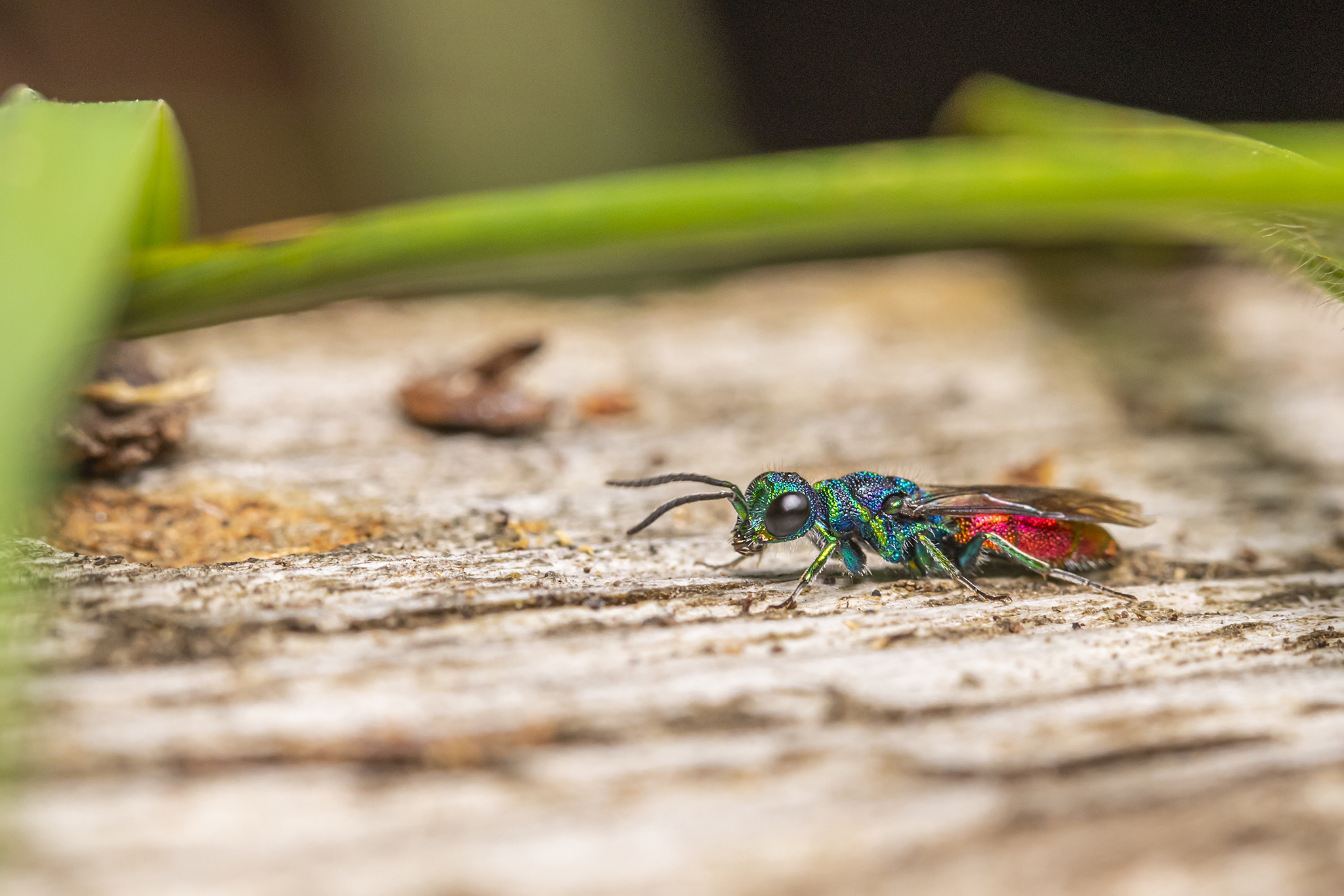Cuckoo wasps, also known as emerald wasps or jewel wasps, are a fascinating group of insects belonging to the family Chrysididae. These strikingly beautiful wasps are named after their behavior, which resembles that of cuckoo birds—they lay their eggs in the nests of other insects, where their larvae develop at the expense of the host’s offspring.
Cuckoo wasps are renowned for their metallic iridescence, which gives them a jewel-like appearance. They come in a variety of vibrant colors, including shades of green, blue, red, and gold, making them stand out among other insects. Their slender bodies and delicate wings add to their ethereal beauty.
Despite their dazzling appearance, cuckoo wasps are relatively small, typically measuring between 6 to 12 millimeters in length. They have a distinctive body shape, with a narrow waist and a slightly curved abdomen. Their antennae are often long and thread-like, allowing them to sense their surroundings with precision.
Cuckoo wasps are solitary insects and are often encountered in gardens, woodlands, and other natural habitats. They are attracted to flowers, where they feed on nectar and pollen, playing a role in pollination. However, their most intriguing behavior is their reproductive strategy.
Female cuckoo wasps locate the nests of solitary bees and wasps, such as mason bees and mud daubers, and lay their eggs inside. The cuckoo wasp larvae hatch first and consume the provisions left by the host insect for its own offspring. This behavior is known as kleptoparasitism, as the cuckoo wasp steals resources from the host.
While cuckoo wasps may seem like a threat to their hosts, they generally do not cause significant harm to the populations of solitary bees and wasps. Instead, they contribute to the complexity of ecological interactions and are fascinating subjects for scientific study and observation.
Overall, cuckoo wasps are intriguing insects that captivate with their beauty and behavior. Their iridescent appearance and secretive lifestyle make them a delightful addition to the rich tapestry of biodiversity in natural ecosystems.
Views: 296
Subscribe to the newsletter:
